Rock Cakes (Rock Buns)
This post may contain affiliate links. See my disclosure policy.
A traditional Rock Cakes recipe from England, also known as Rock Buns, these favorite pastries feature that famous craggy exterior with a buttery tender crumb that’s flavored with dried currants, candied lemon peel and mixed spice. They’re super easy to make and are positively delicious!
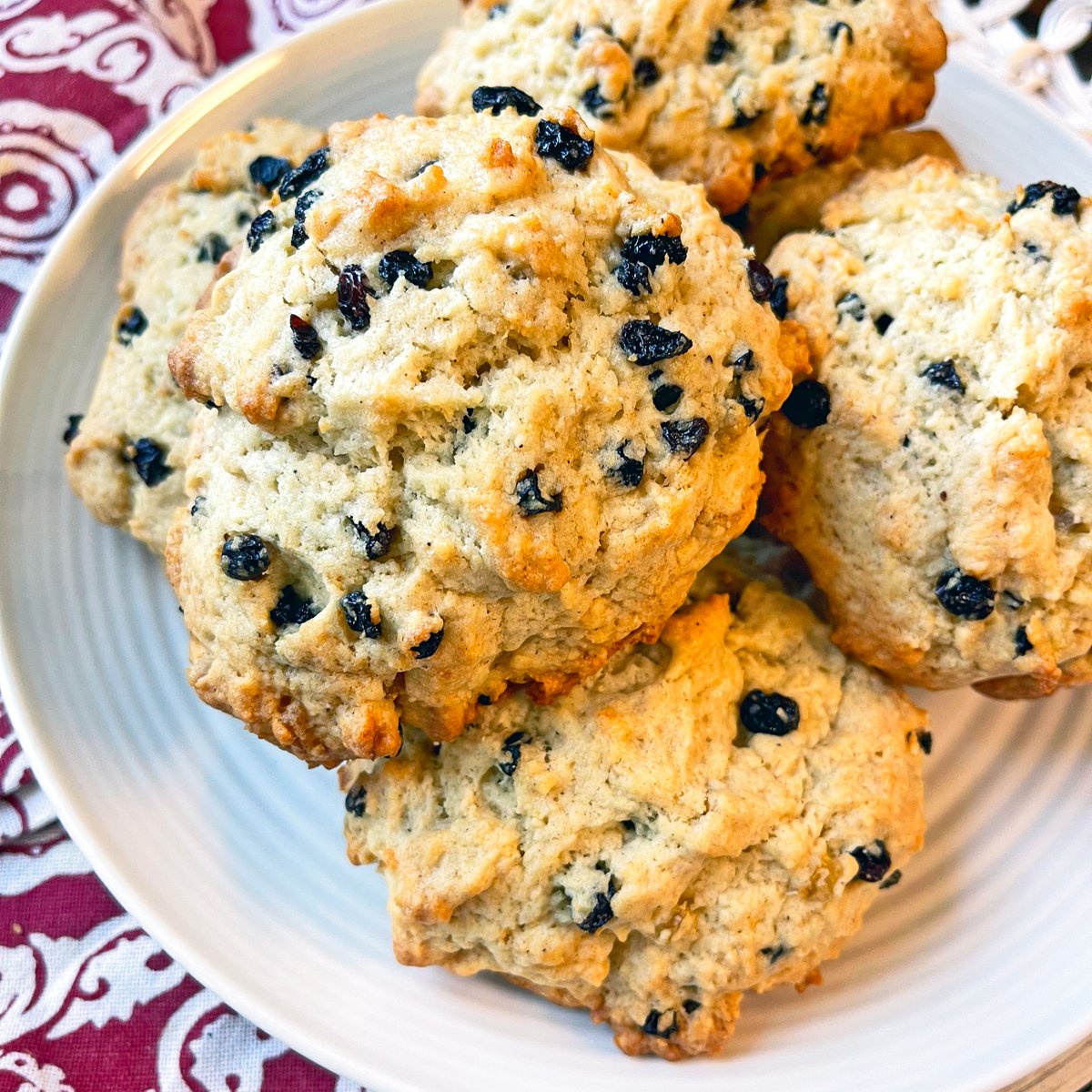
What are Rock Cakes?
Rock cakes, also known as rock buns, are a traditional English pastry popular throughout Great Britain and Northern Ireland and are made with flour, sugar, baking powder, eggs and dried fruits – usually currants or sultanas and often candied citrus peel. They’re fairly dry and crumbly in texture and the batter is dropped in mounds onto the baking sheet, giving them and rough and craggy exterior. They’re often served as part of afternoon tea. Their texture and consistency is similar to scones and they’re nearly identical to what Americans call drop biscuits, only they’re sweet.
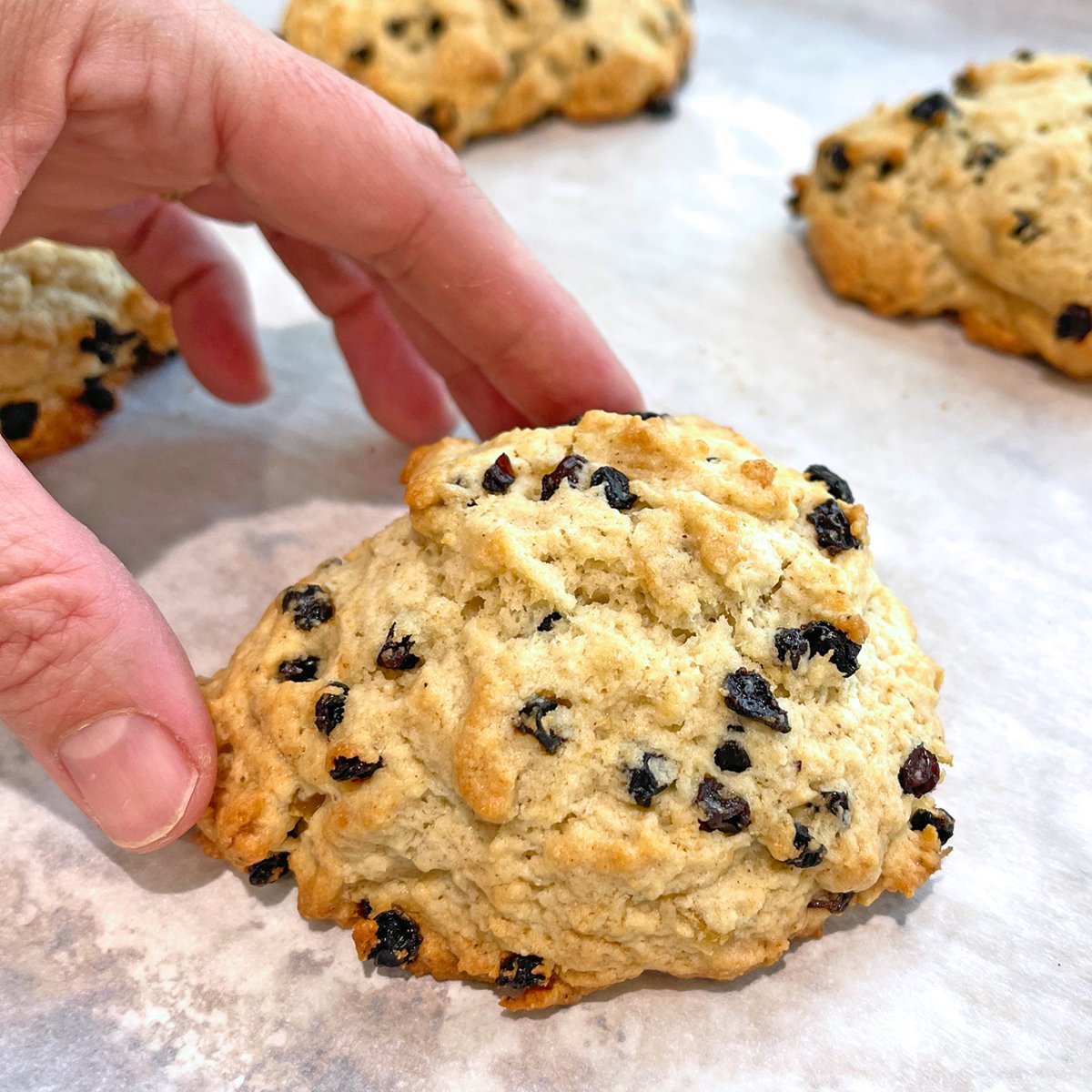
Rock buns date back to at least the mid-19th century. Most food writers attribute rock cakes to Mrs. Beeton’s publication in 1861 (referred to as “rock biscuits”), but they go back earlier. (Which is no surprise considering Mrs. Beeton’s notoriety for plagiarizing earlier authors’ recipes and claiming them as her own. The age old story of stolen glory and ill-gotten fame.) George Read published a recipe for them in his 1854 cookbook, The Complete Biscuit and Gingerbread Baker’s Assistant (now in the public domain), where he refers to them Brighton Rocks (incidentally “volatile salt” is an old-fashioned leavening ingredient also known as baker’s ammonia):
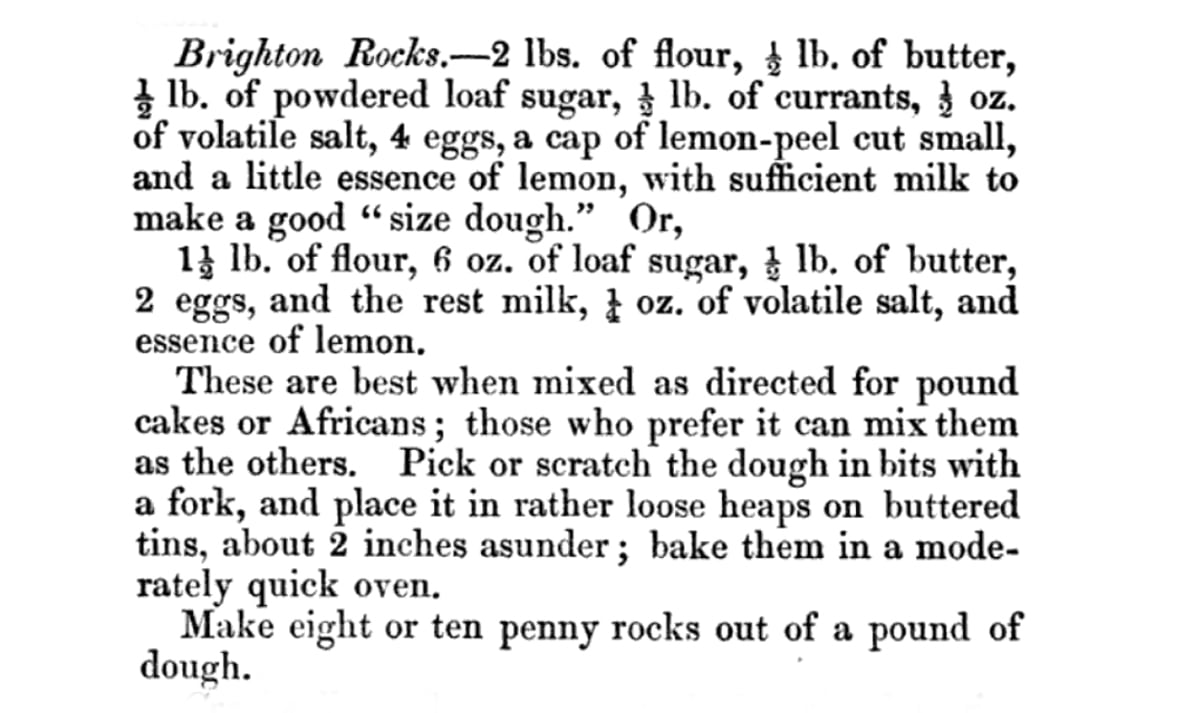
These Brighton Rocks, later to be known as Rock Cakes or Rock Buns, were likely named after the craggy rocks along Brighton’s beaches. A popular resort town, especially during the Victorian era (Roald Dahl fans, it’s the setting for The Witches), Brighton Rocks were something summer tourists could enjoy at the local cafes for afternoon tea. Fast forward to WWII, rock cakes were now being encouraged in the midst of food rationing because they used relatively little eggs and sugar compared to other cakes and pastries. In fact, it was during this time in 1941 that the Pavilion Gardens Café opened and they resumed the Brighton tradition of selling rock cakes once again and have continued to ever since.
And of course for you Harry Potter fans, rock cakes are famously served by Hagrid at tea but in his case they literally are rock hard and they’re politely declined. Poor Hagrid.
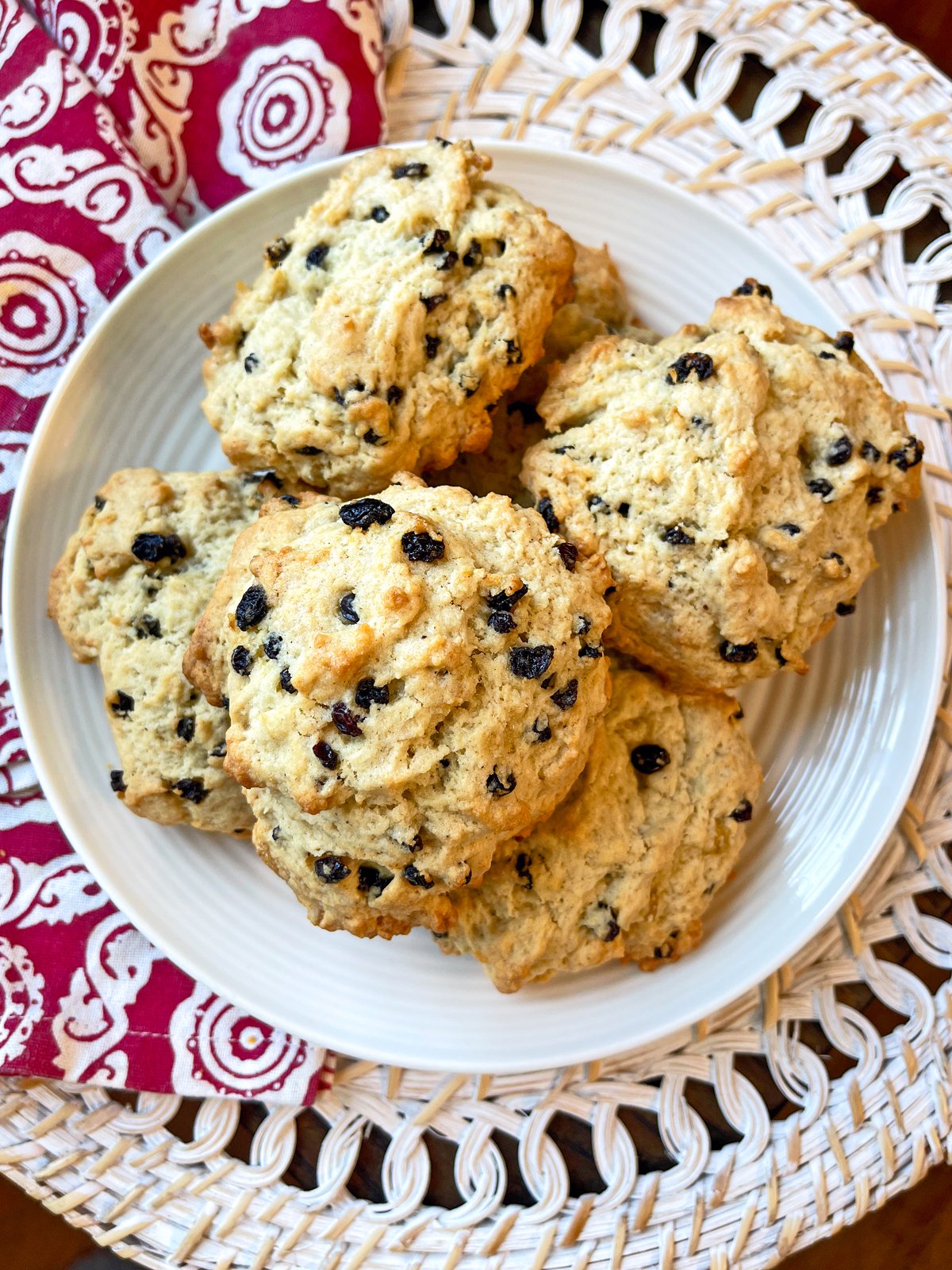
Rock Cakes Ingredients
Rock buns are made with just a small handful of ingredients. Here’s what you will need to make them:
- Flour: Self-rising flour is commonly used in the UK which is flour that already has the leavening agents included. It’s a convenience thing but I prefer to retain control by using regular flour and adding the baking powder separately, ensuring both potency (baking powder loses potency over time) and the right quantity. You can use either all-purpose flour or pastry flour (I use the former).
- Sugar: While you can use regular granulated sugar, traditionally caster sugar is used and that is case for quite a lot of baking in the UK. Caster sugar is simply granulated sugar that is very finely ground, which means it dissolves more readily in baking goods, particularly in baked goods that have a relatively short baking time. It’s a great product and I’m not sure why it isn’t more common in the US outside of professional bakeries. Caster sugar is inexpensive in the UK but is quite expensive in the US. But there’s a very easy solution: make your own. Simply put the sugar in a blender or food processor and pulse several times until the sugar is finely ground. Note: powdered sugar is NOT the same thing (and it contains cornstarch) and cannot be used as a substitute.
- Butter: Chill the butter prior to using it and work quickly so that the butter doesn’t get too warm. Cold butter prevents spreading as the rock buns bake and produces a layered, tender texture instead of a dense, stodgy texture.
- Baking Powder: The leavening agent.
- Salt: Just a touch.
- Mixed Spice: This spice blend is a staple in British baking, used in everything from Figgy Pudding and Cornish Fairings to Barmbrack and Chelsea Buns. Rock cakes are not “spice cakes” so we’re adding just enough to add some flavor depth without it being a dominant flavor. The real star of the show is the butter and the subtle flavor of lemon punctuated by the tangy sweetness of the dried currants. Mixed spice is ubiquitous in the UK, much like pumpkin spice in the US (though a significantly different flavor profile), and can be found in any store but is challenging to find outside the UK. You can buy it online or make your own Mixed Spice which I highly recommend anyway for a far superior flavor.
- Vanilla Extract: This is not a traditional ingredient in rock cakes or really in any traditional British baking. You can omit it if you prefer, but I think its addition really enhances the overall flavor.
- Eggs: You’ll just need one for this recipe.
- Milk: Just enough to add moisture to the batter so it isn’t too dry, only a couple of tablespoons or so. If you have a dairy allergy you can substitute a milk alternative of your choice.
- Dried Currants: A staple in traditional British baking, this ingredient causes a lot of confusion outside the UK because of its erroneous name: they are actually not currants at all but rather a tiny form of raisin also known as zante raisins or zante currants. So for my readers outside the UK, zante raisins is what you’ll need to look for and they are readily available online. They’re much smaller than regular raisins, are firmer and less mushy and aren’t nearly as cloyingly sweet. They have a pleasant sweet-tart flavor. They’re used in traditional dishes like Bara Brith, Hot Cross Buns, Mince Pie, Welsh Cakes, Spotted Dick, Eccles Cakes and endless others. I much prefer dried currants in baked goods over raisins and if you’ve never had them before I think you’ll be pleasantly surprised.
- Candied Lemon Peel: Some traditional recipes include this while others omit it. I think the candied lemon peel really makes rock cakes something special and massively enhances the flavor. But that recommendation is specifically referring to use of homemade candied peel. I cannot emphasize enough how much of a game changer it is to make your own. The store-bought stuff tastes overwhelmingly like chemicals and I always tell people who hate fruit cake that it’s because it’s made with that nasty commercial stuff. Trust me when I say that homemade candied citrus peel will revolutionize your baking (just check out all the reviews mentioning that in my Stollen recipe). Get my recipe for homemade Candied Orange Peel (same process as for candied lemon peel). You’ll thank me later.
With these ingredients you’ll soon be one your way to creating a traditional British favorite with a wonderfully tender texture and irresistible flavor.
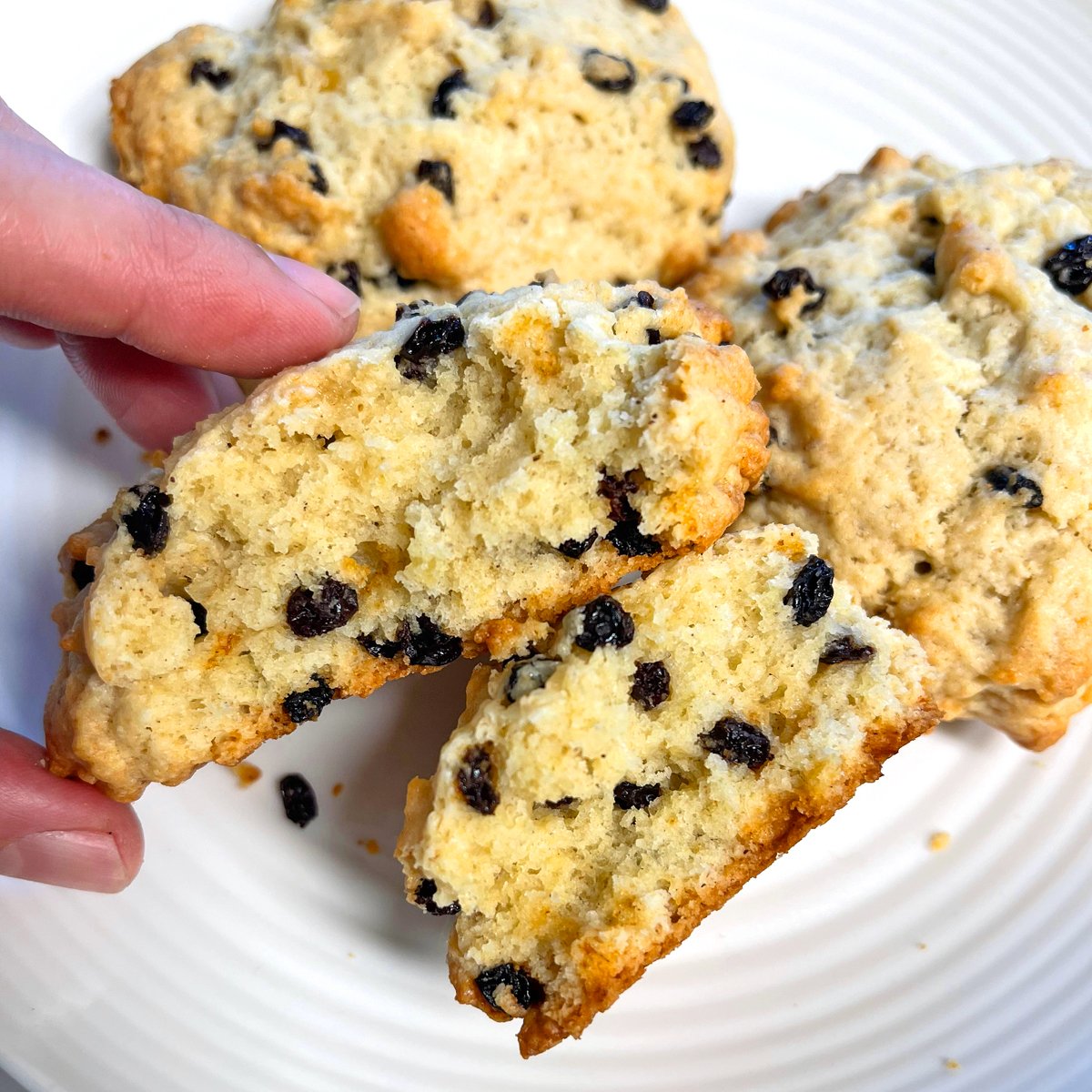
Rock Cakes Recipe
Let’s get started!
Preheat the oven to 350 F/180 C. Line a baking sheet.
Combine the flour, sugar, baking powder, salt and mixed spice in a mixing bowl. Add the cold diced butter.

Use your hands to the butter into the flour, working quickly, until the mixture resembles breadcrumbs. You can also do this by pulsing the mixture in a food process.
In a small bowl, lightly whisk together the egg, milk and vanilla extract. Add this to the flour mixture.
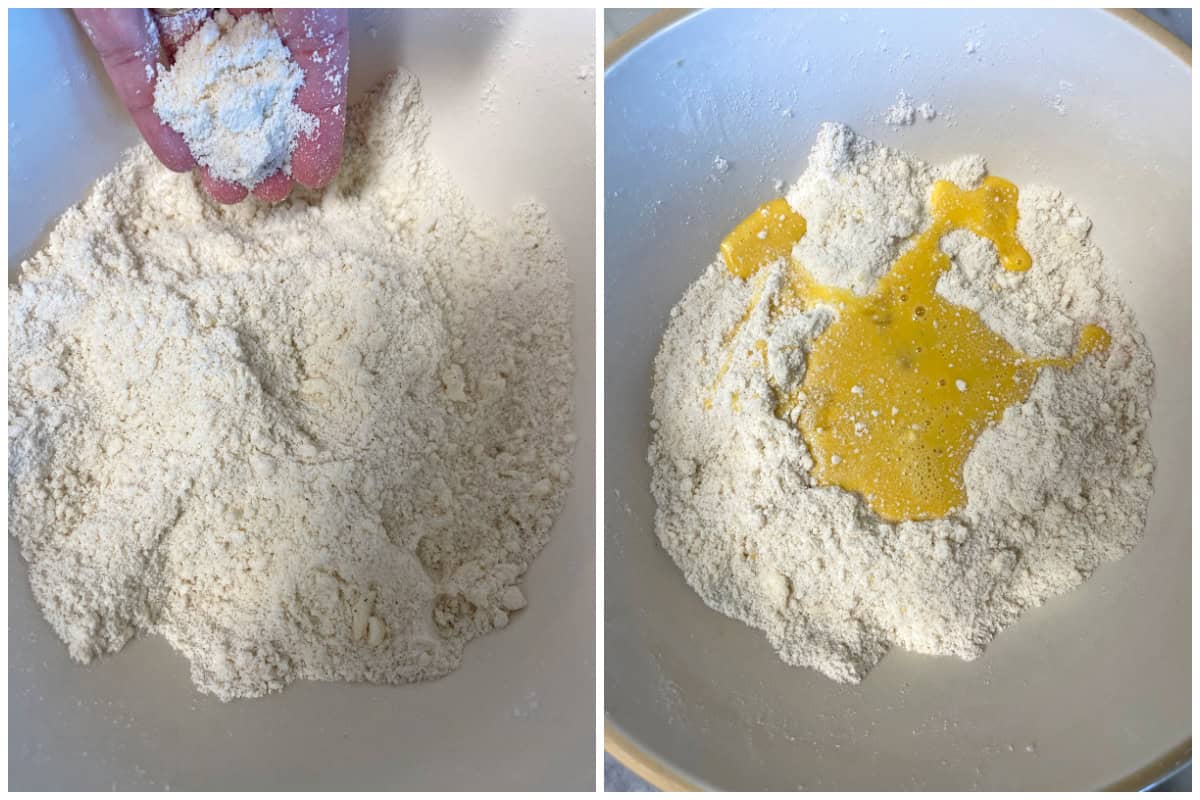
Use a fork to stir the mixture until it comes together in a clumpy mass of dough.
The mixture shouldn’t be too wet but if it’s too dry to form into clumps for baking add just a tiny bit more milk.
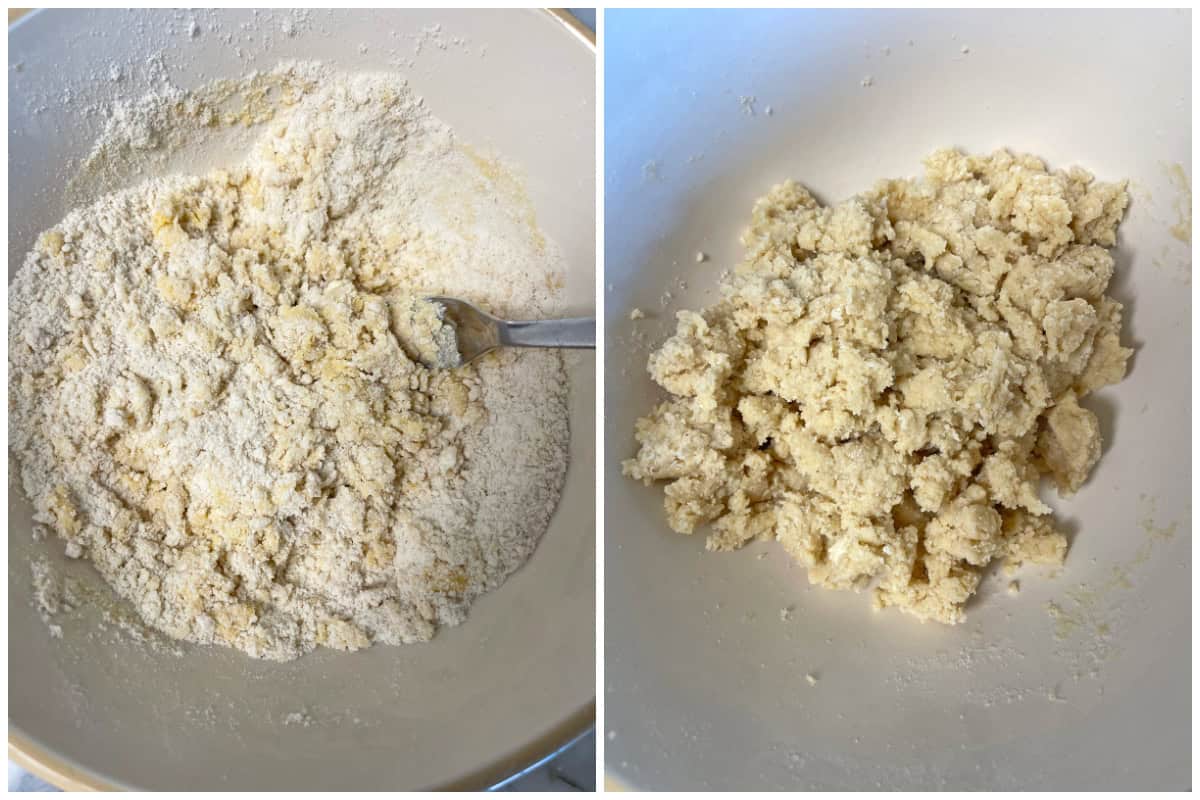
Stir in the dried currants and candied lemon peel, using your hands if needed but be careful not to over-mix the dough. If the dough has become too warm, chill it for 30 minutes or so before baking.
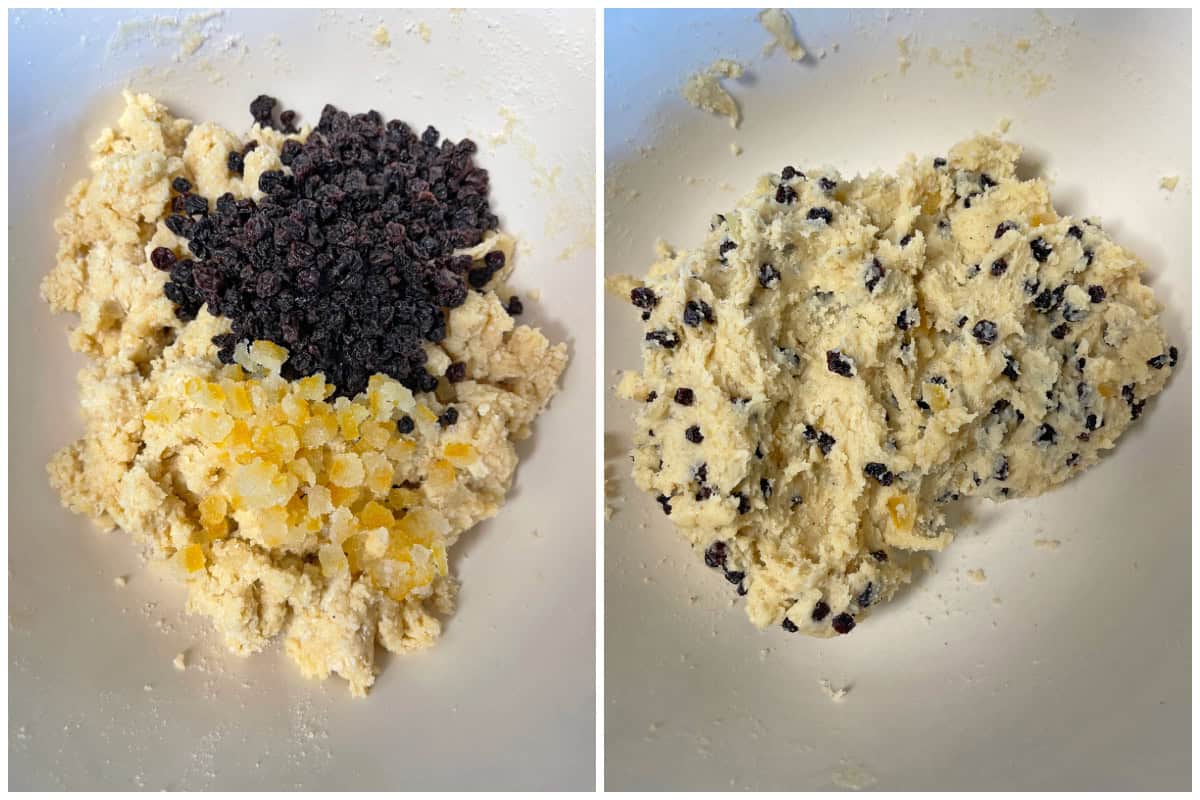
Break off 6 chunks of the dough, with each chunk weighing 95-100 grams for uniform sizes. Place these on a lined baking sheet, spread a couple of inches apart from each other.
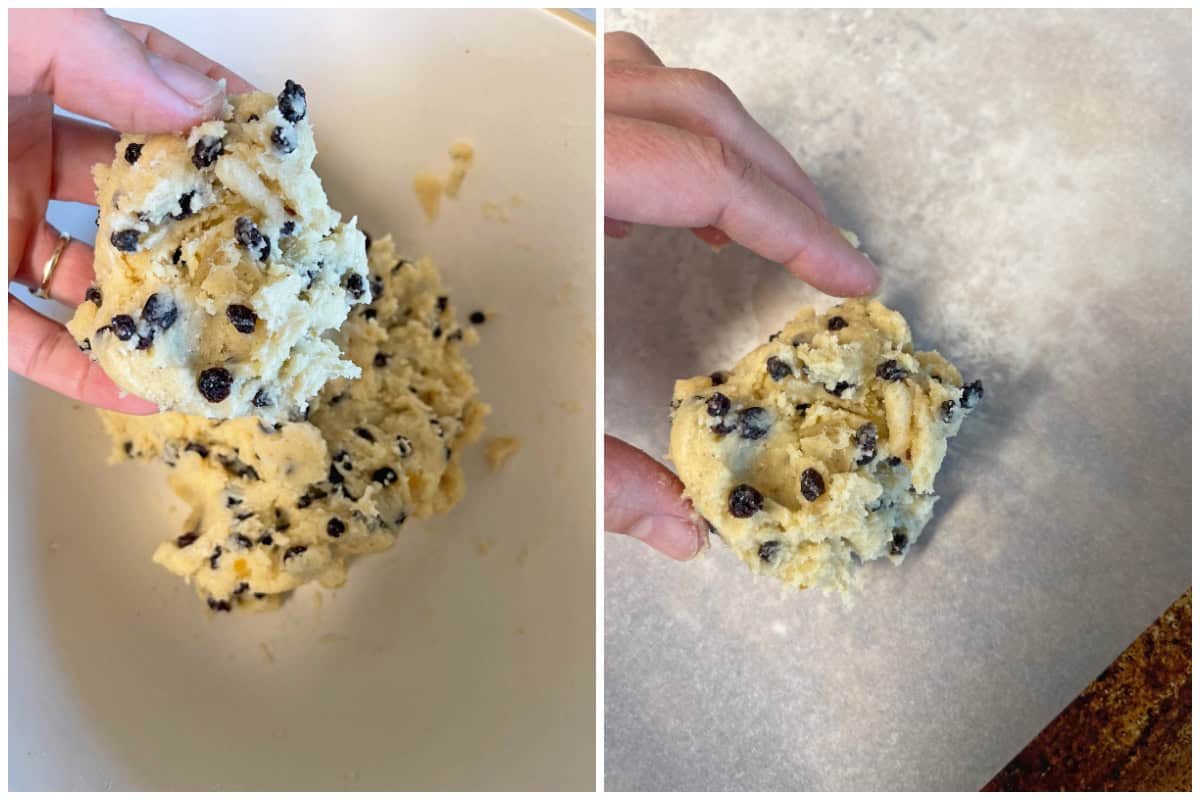
Bake the rock cakes on the middle rack for about 20 minutes or until they turn light golden.
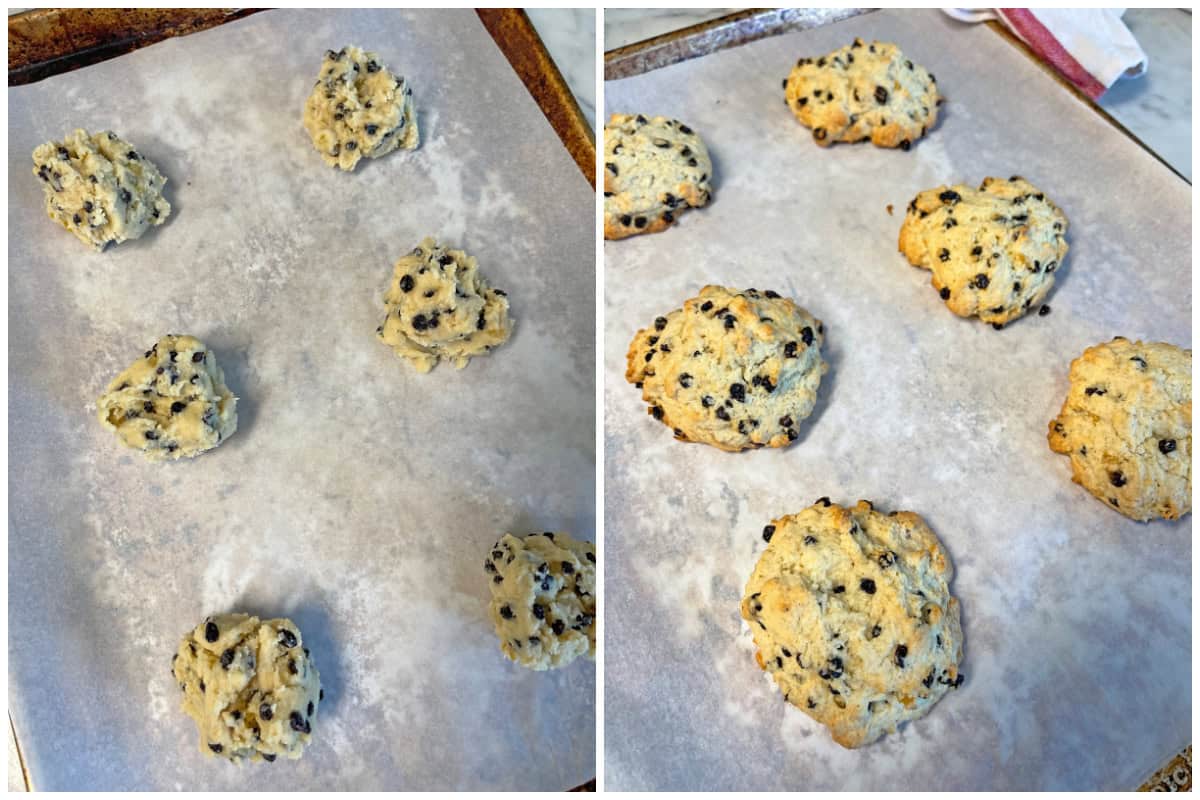
Remove the baking sheet from the oven and let the rock cakes sit for a couple of minutes until they’re cool enough to handle and then serve immediately while still warm.

Rock Buns Storage & Freezing
Rock buns can be stored in an airtight tin for up to 4 days and reheated but they are definitely best eaten fresh out of the oven. Likewise they can be frozen for up to 3 months, thawed and reheated.
Enjoy!
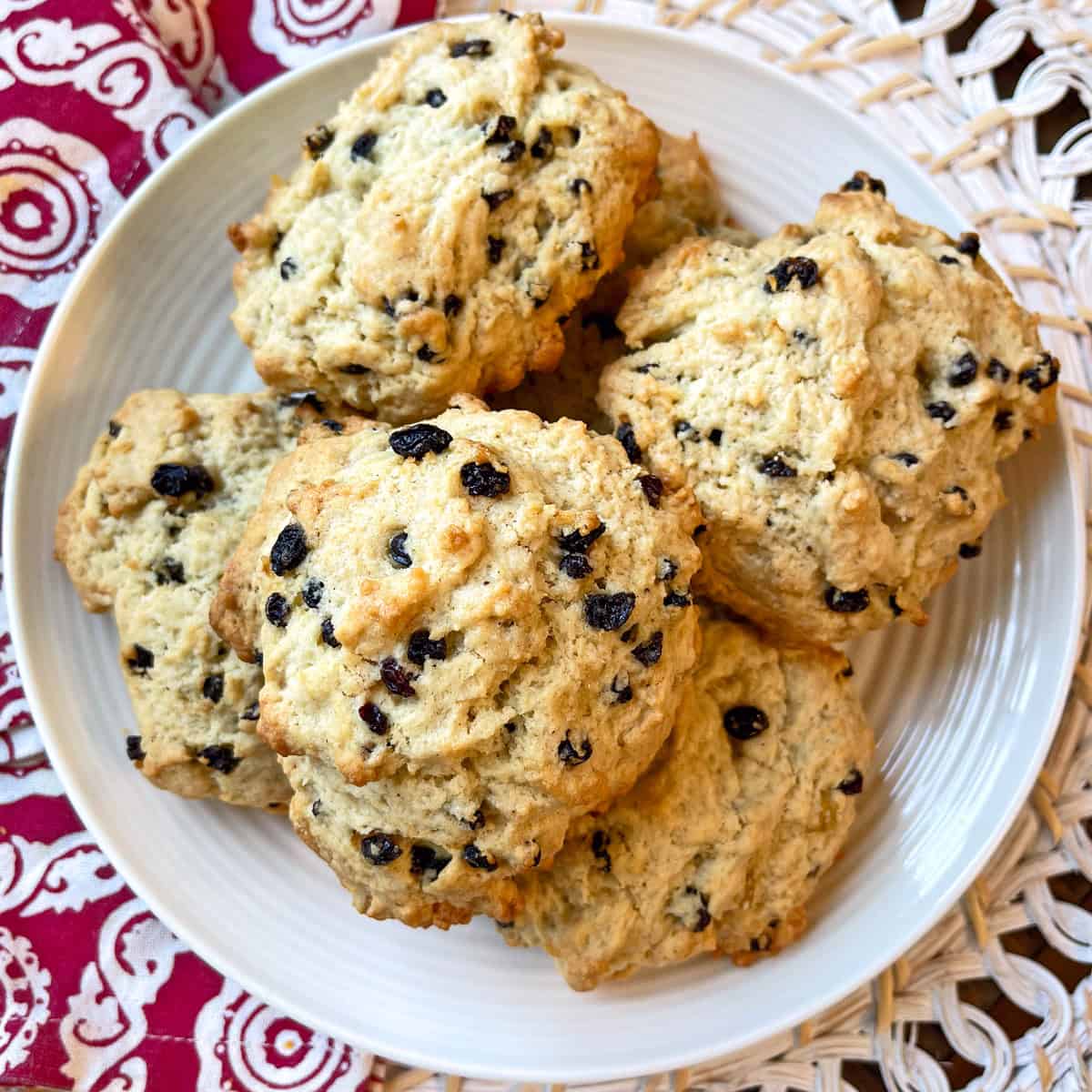
Save This Recipe

Rock Cakes (Rock Buns)
Ingredients
- 1 1/2 cups all-purpose flour or pastry flour
- 1/2 cup caster sugar (make your own by pulsing regular granulated sugar in a blender until finely ground)
- 1 1/2 teaspoons baking powder
- 1/4 teaspoon mixed spice
- homemade mixed spice (highly recommended; click link for recipe)
- 1/4 teaspoon salt
- 10 tablespoons cold butter , diced and chilled
- 1 egg
- 2 tablespoons milk
- 1 teaspoon pure vanilla extract
- 1/2 cup dried currants (aka zante raisins)
- 3 tablespoons finely chopped candied lemon peel
- homemade candied lemon peel (very strongly recommended; click link for recipe)
Instructions
- Preheat the oven to 350 F/180 C. Line a baking sheet.Combine the flour, sugar, baking powder, salt and mixed spice in a mixing bowl. Add the cold diced butter.Use your hands to the butter into the flour, working quickly, until the mixture resembles breadcrumbs. You can also do this by pulsing the mixture in a food process.
- In a small bowl, lightly whisk together the egg, milk and vanilla extract. Add this to the flour mixture. Use a fork to stir the mixture until it comes together in a clumpy mass of dough. The mixture shouldn't be too wet but if it's too dry to form into clumps for baking add just a tiny bit more milk.Stir in the dried currants and candied lemon peel, using your hands if needed but be careful not to over-mix the dough. If the dough has become too warm, chill it for 30 minutes or so before baking.
- Break off 6 chunks of the dough, with each chunk weighing 95-100 grams for uniform sizes. Place these on a lined baking sheet, spread a couple of inches apart from each other.Bake the rock cakes on the middle rack for about 20 minutes or until they turn light golden.Remove the baking sheet from the oven and let the rock cakes sit for a couple of minutes until they're cool enough to handle and then serve immediately while still warm.


















